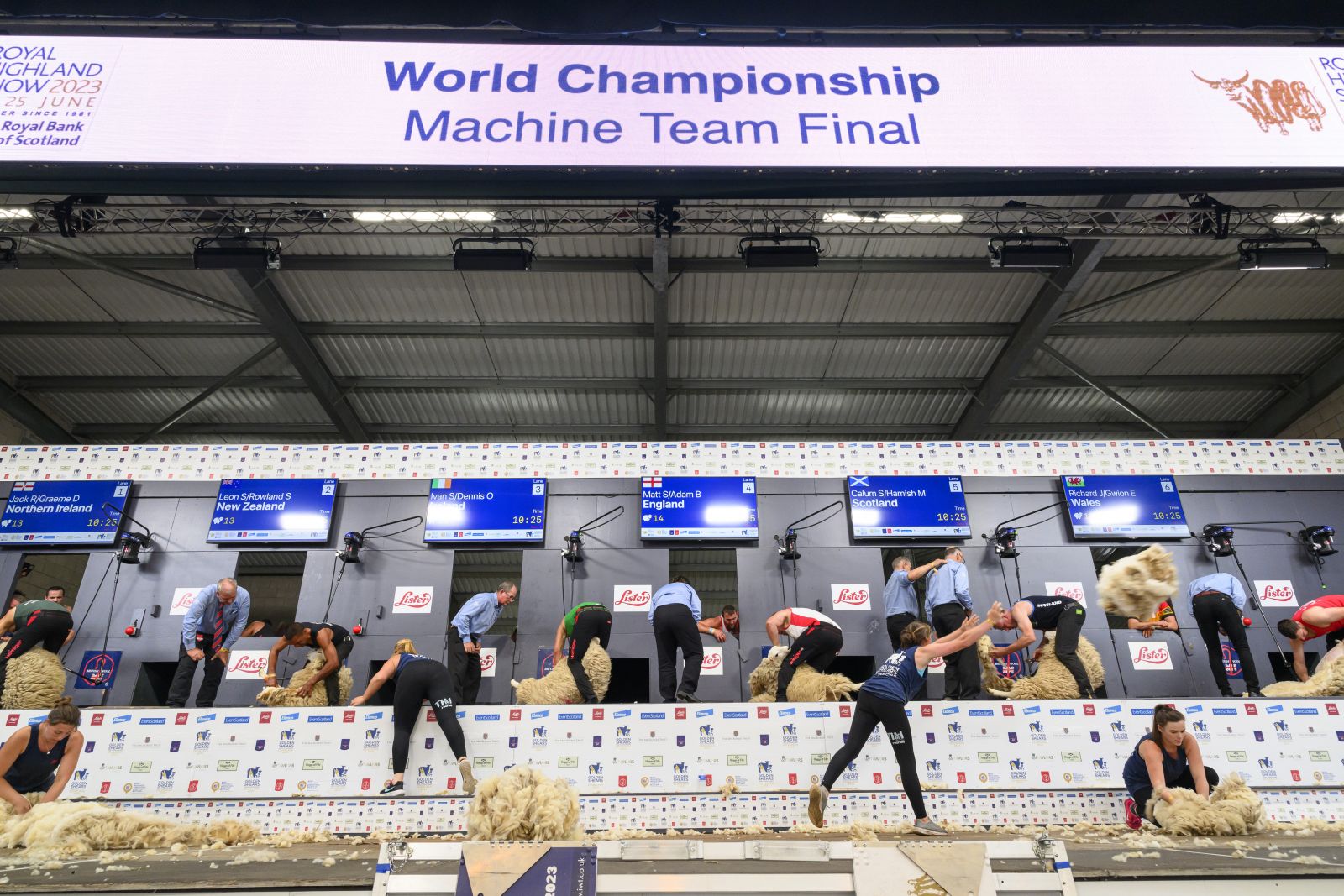 We talked to Mark Currie, director of operations for the Royal Highland Show. Mark shares details of the operational challenges faced when organising an event of this scale, changes made in 2023, the importance of sustainability and highlights.
We talked to Mark Currie, director of operations for the Royal Highland Show. Mark shares details of the operational challenges faced when organising an event of this scale, changes made in 2023, the importance of sustainability and highlights.
Overall, what are the biggest operational challenges that you face when organising the event?
Operationally, our biggest challenge is the sheer scale of the Royal Highland Show. To give you an idea, once the event is up and running, it is the same size as Paisley, which is the sixth largest town in Scotland. We effectively become Britain’s largest farm, have 7,500 people staying onsite and over 5000 livestock, 1,000 trade stands. In 2023, we attracted our largest audience to date with 217,000 people coming through the gates, beating our previous record by 20,000.
As the show evolves, we’re conscious of striking the balance between our agricultural attendees who come to the show on Thursday and Friday and our urban audience who visit over the weekend. With prices rising so rapidly across the board, we are having to constantly innovate and create new revenue streams. We’re not in a position to keep ramping up our ticket prices as we know that it would simply price many of our attendees out of coming along.
Did you introduce any new features at the 2023 event?
The introduction of our RH Hoolie in 2023 is a great example of just how can expand our offering. We added a small festival stage showcasing the best of Scottish music (and a little Irish thrown in too) and received fantastic feedback. We will definitely continue with it moving forward. Prior to joining the Royal Highland Show I worked for DF Concerts so I have a lot of experience in music events, so the timing was perfect.
We also worked closely with ADI, who installed all our LED screens and with QTV who launched Royal Highland Show TV, they did a great job and it allowed us to create a new revenue stream from digital advertising.
What did you do differently from an operational point of view in 2023 as a result of learnings from the 2022 event?
Everyone in the industry knows how difficult the supply chain was in 2022 and for us the labour market was the biggest issue. So, for the 2023 show we decided to approach a few key areas that are heavily reliant on people a little differently. We appointed three overlay managers who were each responsible for overseeing our food and beverage, security and cleaning contractors. Although it added an additional layer of expense it improved the delivery of services across the board. We also appointed more contractors in those sectors.
 Did that impact on the suppliers that you worked with in 2023?
Did that impact on the suppliers that you worked with in 2023?
Our incumbent security company G4S had an invaluable amount of experience with our event, by adding in Security Scotland and Streamline Leisure we had an improved service. Streamline Leisure are a Welsh business who also provide cleaners so we utilised those too which worked well, their supervisors and management team did an excellent job. We also brought in Immediate Waste who shared some of the waste management with our temporary cabin and toilet supplier Qdos Event Hire.
We also appointed Rogue City who oversaw the overlay for the delivery of screens, branding and signage projects and we were really pleased with how they performed.
Another significant change was moving to See Tickets for all our ticketing requirements in 2023, which proved to be a huge success. They completely changed the level of service and support that we received overnight! They have a really pragmatic and flexible approach with a platform to match. The AI that they integrated into the customer service elements literally took away 95% of the phone calls that we would usually receive. It also churned out a report at the end of each day with the top questions being asked by attendees, so we could take its findings and tailor social media posts in response. It’s a clever system that had a big impact.
Other suppliers included Field & Lawn, who supplied approximately 14,000m2 of marquees onsite and Actavo provide all our grandstands.
 Can you tell us how important delivering a sustainable event is and what you do to minimise your environmental impact?
Can you tell us how important delivering a sustainable event is and what you do to minimise your environmental impact?
I think as an agricultural show we have double the amount of pressure and are even more concerned about delivering the show sustainably. It is hugely important to us and we spend a great deal of time and money in trying to get it right. In 2017 we installed 75km of underground piping and cabling to run mains power and extensive solar panelling across the site.
We have 17 permanent toilet and shower blocks and a grey water tank that feeds the entire site so we’re not reliant on portable toilets that require chemicals like other shows. During the event 4.2 million litres will be flushed through the grey water system.
Working with Immediate Waste, we are able to ensure that 94% of our waste avoids landfill and we have an onsite mixed use recycling facility.
In 2018 we made a conscious decision to allocate our budget to practical application of energy saving initiatives rather than assessment and measurement tools. This is something that we will need to revisit in the future but as a self-sustaining event that doesn’t receive any government funding, it will always be a balancing act.
What was your highlight(s) from this year’s event?
Alongside the RH Hoolie, the delivery of the Golden Shears Championships is right up there as a highlight from this year’s show. An event within an event, it saw 500 delegates from 36 countries around the globe competing and was absolutely phenomenal. It tripled the number of sheep that we would normally see at the show. Incorporated sizeable opening and closing ceremonies and we had film crews onsite from Countryfile and BBC Landward.
On a personal level, coming back after the challenges of last year to deliver such a high-quality event, which people are hailing as the best in its 200-year history, is tremendously satisfying.
